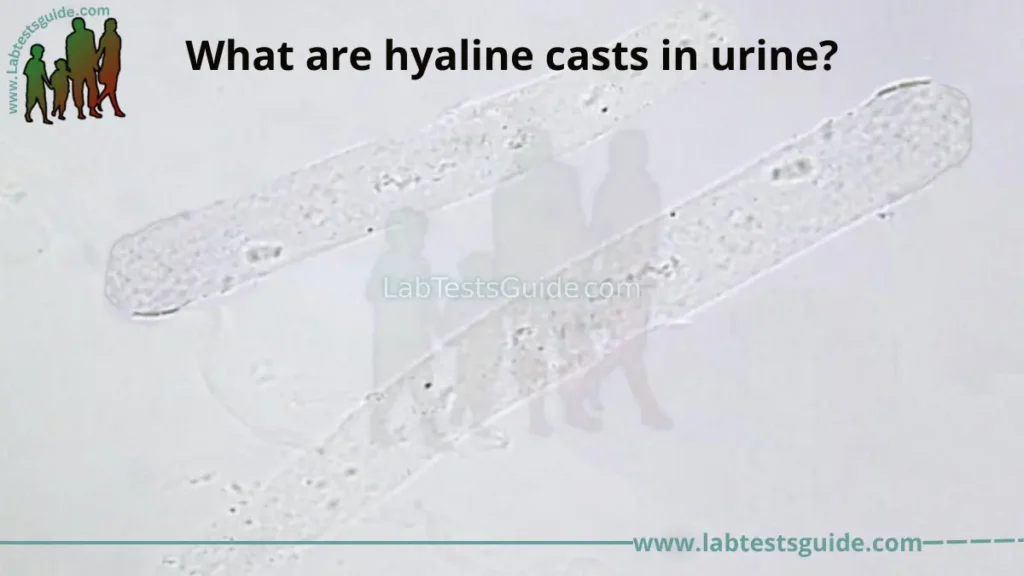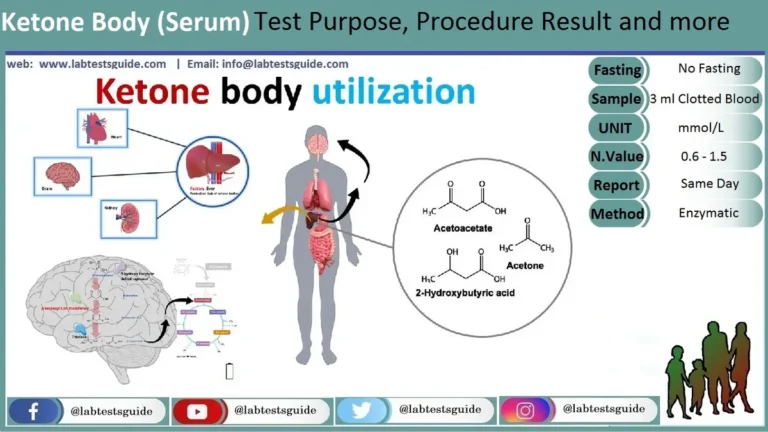Hyaline casts are cylindrical structures made up of a protein called hyaline and are the most common type of cast found in urine. They can provide important diagnostic information for physicians and their presence or absence, as well as their composition, can indicate certain medical conditions. In this article, we will discuss the causes, diagnosis, treatment, and prevention of hyaline casts in urine.

Introduction:
Hyaline casts are one of the types of casts that can be found in urine. Casts are cylindrical structures that can form in the kidneys and urinary tract and then be passed out in urine. Casts can provide important diagnostic information for physicians, as their presence or absence, as well as their composition, can indicate certain medical conditions. Hyaline casts are made up of a protein called hyaline and are the most common type of cast found in urine. In this article, we will discuss what hyaline casts are, the causes of their formation, how they are diagnosed, and the treatment and prevention of their occurrence in urine.
What are hyaline casts in urine?
Hyaline casts in urine are cylindrical structures that are made up of a protein called hyaline. They can be seen under a microscope in a urine sample and are the most common type of casts found in urine. Hyaline is a protein that is produced by the kidneys and can accumulate in the renal tubules. When the protein concentration in the urine is high, hyaline casts can form and be passed out in the urine. Hyaline casts are typically colorless and transparent and can appear as elongated, straight, or slightly curved structures with rounded ends. They can be an indication of various medical conditions, such as dehydration, fever, kidney disease, or urinary tract infection, among others.

Causes of hyaline casts in urine:
There are several potential causes of hyaline casts in urine, including:

- Dehydration: When the body is dehydrated, the concentration of protein in the urine can increase, leading to the formation of hyaline casts.
- Exercise: Intense exercise can cause dehydration and result in the formation of hyaline casts in urine.
- Fever: A fever can cause an increase in protein concentration in the urine and the formation of hyaline casts.
- Kidney disease: Various types of kidney disease can lead to the formation of hyaline casts in urine, such as glomerulonephritis, interstitial nephritis, and diabetic nephropathy.
- Urinary tract infection: A urinary tract infection can cause inflammation and damage to the kidneys, resulting in the formation of hyaline casts in urine.
- Medications: Certain medications, such as nonsteroidal anti-inflammatory drugs (NSAIDs), can cause an increase in protein concentration in the urine and the formation of hyaline casts.
- Other medical conditions: Various other medical conditions, such as hypertension, heart failure, and multiple myeloma, can cause an increase in protein concentration in the urine and the formation of hyaline casts.
Diagnosis of hyaline casts in urine:
The diagnosis of hyaline casts in urine is typically done through a urinalysis. This involves analyzing a urine sample in a laboratory setting to identify the presence of casts, including hyaline casts. The steps involved in the diagnosis of hyaline casts in urine may include:
- Urine sample collection: A healthcare professional will ask the patient to provide a urine sample, which will then be analyzed in the laboratory.
- Microscopic examination: The urine sample will be examined under a microscope to identify the presence of hyaline casts or other types of casts.
- Urine chemistry: The urine sample may also be subjected to chemical analysis to measure protein levels and other factors.
- Medical history: The patient’s medical history, including any recent illnesses or medications, will be considered as part of the diagnostic process.
- Physical exam: A physical exam may be performed to check for signs of dehydration or other medical conditions that can cause hyaline casts to form.
If hyaline casts are detected in the urine sample, further testing may be necessary to determine the underlying cause and to develop an appropriate treatment plan.
Prevention of hyaline casts in urine:
Prevention of hyaline casts in urine involves addressing the underlying medical conditions or lifestyle factors that can cause their formation. Some measures that may be helpful in preventing hyaline casts in urine include:
- Staying hydrated: Drinking plenty of water and other fluids can help prevent dehydration, which is a common cause of hyaline casts in urine.
- Managing medical conditions: Taking medications as prescribed and managing underlying medical conditions, such as hypertension or diabetes, can help prevent the formation of hyaline casts in urine.
- Avoiding excessive exercise: Overexertion during exercise can cause dehydration, which can lead to the formation of hyaline casts in urine.
- Regular medical checkups: Regular checkups with a healthcare provider can help identify and address underlying medical conditions before they lead to the formation of hyaline casts in urine.
- Avoiding NSAIDs: Certain medications, such as nonsteroidal anti-inflammatory drugs (NSAIDs), can increase protein concentration in the urine and lead to the formation of hyaline casts. Avoiding or minimizing the use of these medications can help prevent their formation.
By taking these preventative measures, individuals may be able to reduce their risk of developing hyaline casts in urine and the associated medical conditions that can be indicated by their presence.
Treatment of hyaline casts in urine:
The treatment of hyaline casts in urine depends on the underlying cause. Some potential treatment options include:
- Treating dehydration: If dehydration is the cause of hyaline casts in urine, increasing fluid intake and taking steps to prevent dehydration can help resolve the issue.
- Antibiotics for urinary tract infections: If a urinary tract infection is causing the hyaline casts, antibiotics may be prescribed to treat the infection.
- Managing kidney disease: If kidney disease is the underlying cause, treatment may involve medications to manage blood pressure, blood sugar, or inflammation.
- Discontinuing medications: If the hyaline casts are caused by medication use, stopping or changing medications may be necessary to resolve the issue.
- Treating other medical conditions: If another medical condition, such as multiple myeloma, is causing the hyaline casts, treating that condition may be necessary to resolve the issue.
- Regular monitoring: In some cases, regular monitoring of urine samples may be necessary to track the presence of hyaline casts and monitor progress.
It’s important to note that the presence of hyaline casts in urine does not always require treatment. In some cases, they may be a benign finding and not indicative of any medical condition. However, if there are other symptoms or underlying medical conditions present, treatment may be necessary. It is recommended to consult with a healthcare professional for a proper diagnosis and treatment plan.
FAQs:
What causes hyaline casts in urine?
Hyaline casts in urine can be caused by a variety of factors including dehydration, exercise, fever, medication use, kidney disease, and urinary tract infections.
What do hyaline casts look like?
Hyaline casts are transparent and colorless, and appear as a cylindrical shape with rounded ends.
Are hyaline casts in urine normal?
Hyaline casts may be present in normal urine, especially in individuals who exercise regularly or are dehydrated. However, their presence in large numbers can be indicative of underlying medical conditions.
How are hyaline casts detected in urine?
Hyaline casts are detected in urine through a urinalysis, which involves analyzing a urine sample under a microscope.
Are hyaline casts in urine a sign of kidney disease?
Hyaline casts can be a sign of kidney disease, particularly if they are present in large numbers or accompanied by other symptoms.
Can dehydration cause hyaline casts in urine?
Yes, dehydration is a common cause of hyaline casts in urine.
Can medication use cause hyaline casts in urine?
Yes, certain medications such as nonsteroidal anti-inflammatory drugs (NSAIDs) can increase protein concentration in the urine and lead to the formation of hyaline casts.
Can urinary tract infections cause hyaline casts in urine?
Yes, urinary tract infections can cause hyaline casts in urine.
Are hyaline casts in urine painful?
No, the presence of hyaline casts in urine is typically not painful.
Can hyaline casts in urine be treated?
The treatment of hyaline casts in urine depends on the underlying cause. In some cases, they may not require treatment, while in others, treatment of the underlying condition may be necessary.
Can hyaline casts in urine be prevented?
Prevention of hyaline casts in urine involves addressing underlying medical conditions and lifestyle factors that can cause their formation, such as staying hydrated, managing medical conditions, and avoiding excessive exercise.
How are hyaline casts different from other types of casts?
Hyaline casts are a type of urinary cast that is made up of protein and appears as a transparent, colorless cylindrical shape. Other types of casts can include granular, waxy, and cellular casts.
Can hyaline casts be found in children’s urine?
Yes, hyaline casts can be found in children’s urine, especially in those who are dehydrated or have a urinary tract infection.
How often should urine samples be checked for hyaline casts?
The frequency of urine sample checks for hyaline casts depends on the individual’s medical history and risk factors. It is recommended to consult with a healthcare professional for guidance.
Is the presence of hyaline casts in urine always a cause for concern?
No, the presence of hyaline casts in urine does not always require medical intervention. However, if they are present in large numbers or accompanied by other symptoms, medical attention may be necessary.
Conclusion:
In conclusion, hyaline casts are a type of urinary cast that can be found during a urinalysis. While they are typically benign and may not require treatment, they can also be indicative of underlying medical conditions such as dehydration, kidney disease, or urinary tract infections. The prevention and treatment of hyaline casts depend on the underlying cause and may involve measures such as staying hydrated, managing medical conditions, or discontinuing certain medications. It is important to consult with a healthcare professional for proper diagnosis and treatment.
References:
- “Hyaline Casts.” StatPearls. https://www.ncbi.nlm.nih.gov/books/NBK539708/
- “Hyaline Casts in Urine.” Healthline. https://www.healthline.com/health/hyaline-casts-in-urine
- “Hyaline Casts.” MedlinePlus. https://medlineplus.gov/lab-tests/hyaline-casts/
- “What Are Hyaline Casts?” Verywell Health. https://www.verywellhealth.com/hyaline-casts-514726
- “Hyaline Casts: Overview, Formation, and Clinical Significance.” LabCE. https://www.labce.com/spg93570_hyaline_casts.aspx
- “Hyaline Casts.” ARUP Laboratories. https://arupconsult.com/content/urine-casts#Hyaline
- “What Are Hyaline Casts in Urine?” Reference Range. https://www.referencerange.org/hyaline-casts-in-urine/
- “Hyaline Casts in Urine: Causes and Symptoms.” Bel Marra Health. https://www.belmarrahealth.com/hyaline-casts-in-urine-causes-and-symptoms/
- “Hyaline Casts.” Labpedia.net. https://www.labpedia.net/test/1912/hyaline-casts/
- “Hyaline Casts in Urine: Symptoms, Causes, and Treatment.” Healthline News. https://www.healthline.com/health/hyaline-casts-in-urine#treatment
Possible References Used





